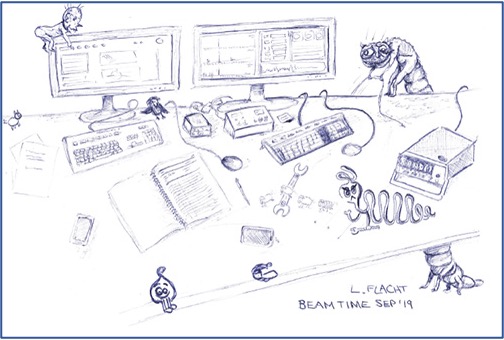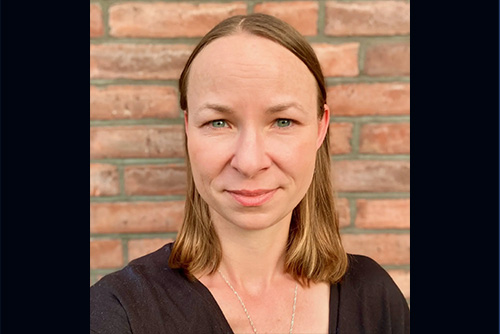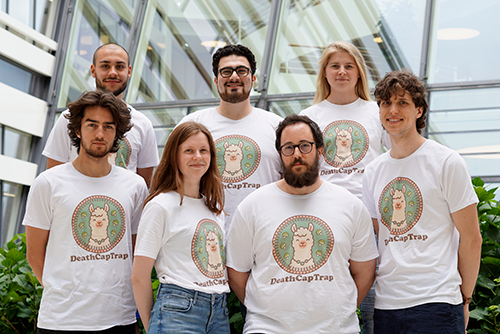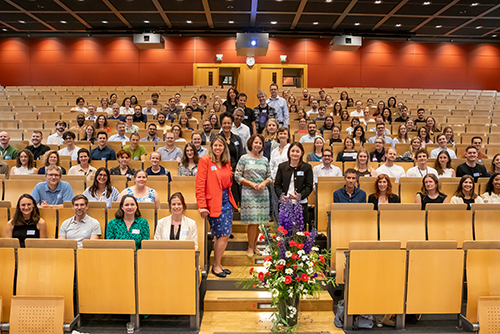Exploring Systems in Infection Biology
What is systems biology? How can systems biology approaches advance infection biology research? Investigating these key questions was the focus of the first CSSB International Symposium held from 9-11 April at the Bernhard Nocht Institute for Tropical Medicine in Hamburg, Germany. The symposium organized in cooperation with the Joachim Herz Stiftung, focused on understanding “Systems in Infection Biology - From Molecules to Organisms" and examined the potential synergies and interdisciplinary opportunities existing between CSSB’s three research areas; systems, infection and structural biology.
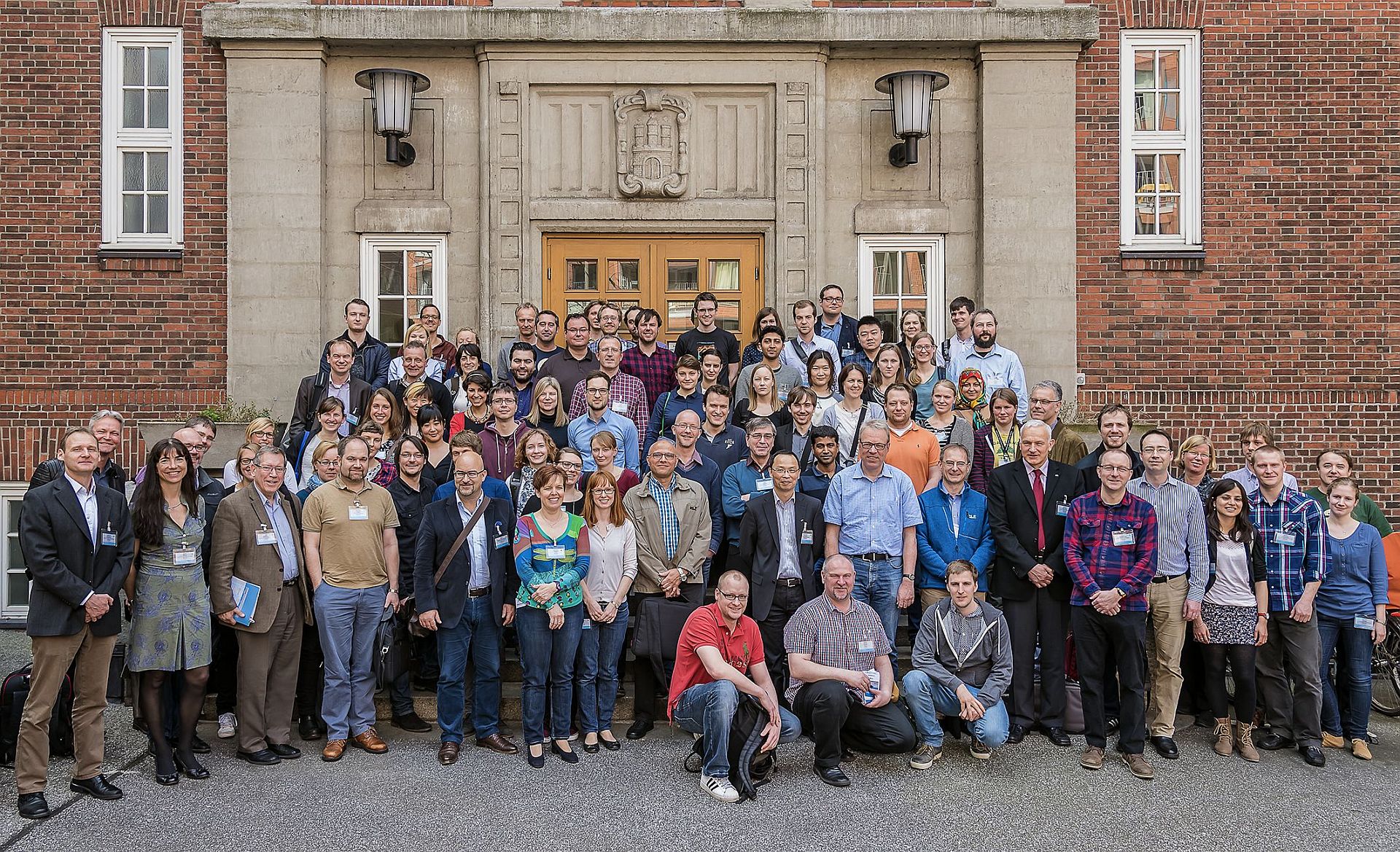
International experts in these three fields gathered together to share insights and knowledge during the symposium where an atmosphere of collaboration and open scientific exchange was established from the very beginning. “Bringing together” means among many other things: learning from each other, listening to each other, working and collaborating with each other,” explained CSSB Scientific Director, Matthias Wilmanns in his welcome speech. “We are happy to support and to strengthen interdisciplinary research in the new Centre for Structural Systems Biology here in Hamburg. With its interdisciplinary focus, the symposium helps to broaden research and to come up with new ideas to tackle existing questions,” added Andrea Pauline Martin, Vice-Chairwoman of the Executive Board of the Joachim Herz Stiftung, in her welcome speech.
Systems biology, ships and synchrotrons
During the symposium, renowned speakers addressed different facets of systems biology such as the systems biology of apoptosis, the use of omics data to understand interactions between pathogen and host and the biotechnical applications of systems biology. Highlights included James Galagan’s (Boston University) explanation of the mapping and modeling of microbial cellular networks and Patrick Cramer’s (Max Planck Institute for Biophysical Chemistry) talk about the integrated structural biology of genome transcription. Many thought provoking questions were posed after each talk enabling an exciting exchange of ideas between the speakers and audience members.
"The CSSB Symposium highlighted the remarkable breadth of research activities and potential in the application of systems biology in infectious disease biology. The infectious disease field is ripe for the multidisciplinary focus of systems approaches and the symposium highlighted some of the best research groups across the globe working in this growing arena," stated Gerry Wright (McMaster University).
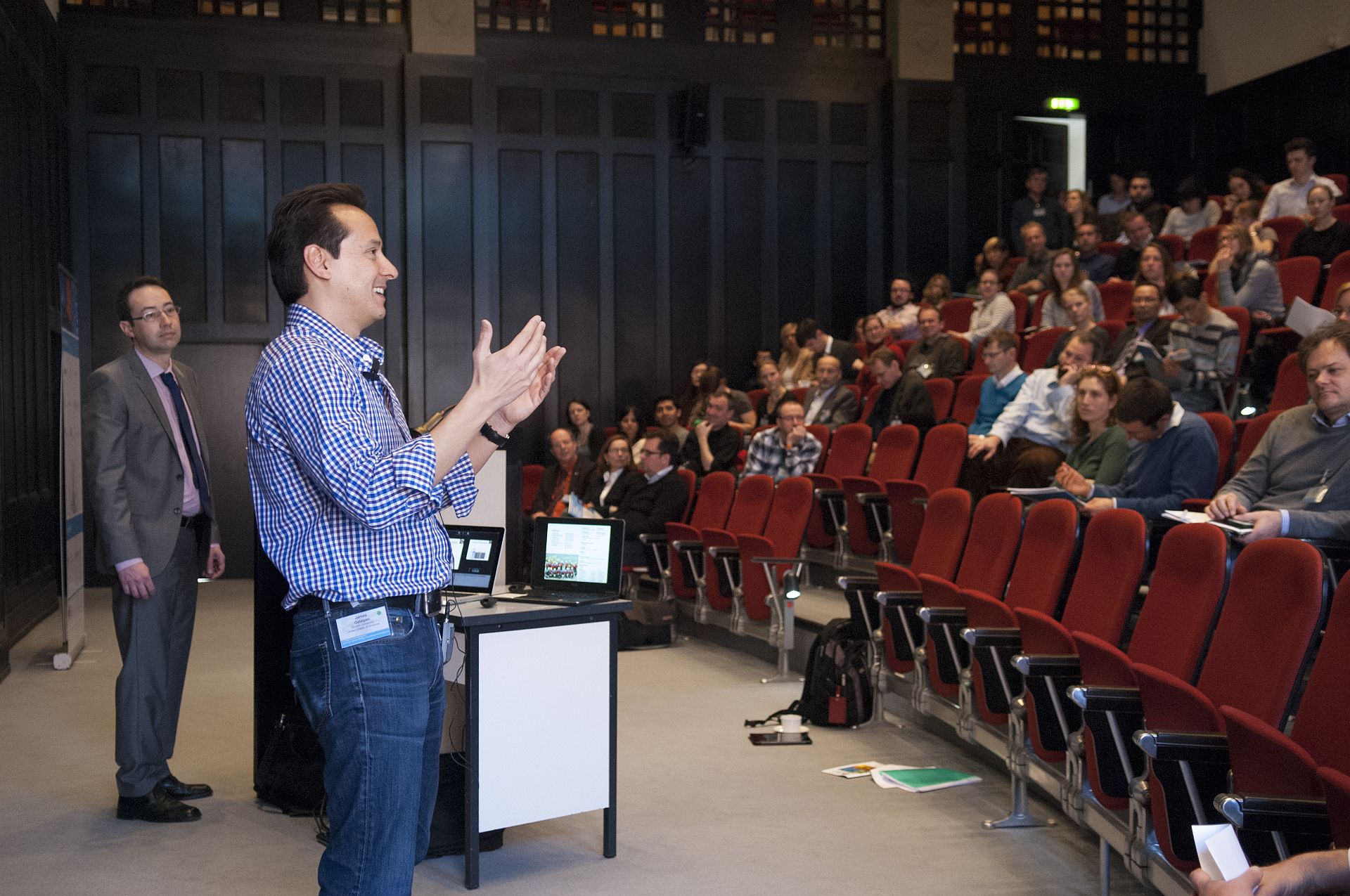
Elegant cruise ships and the bustling activity of Hamburg’s harbour provided for a nice change of scenery during session pauses. While admiring the view, symposium participants not only enjoyed a cup of coffee but also had the chance to partake in many insightful networking conversations.
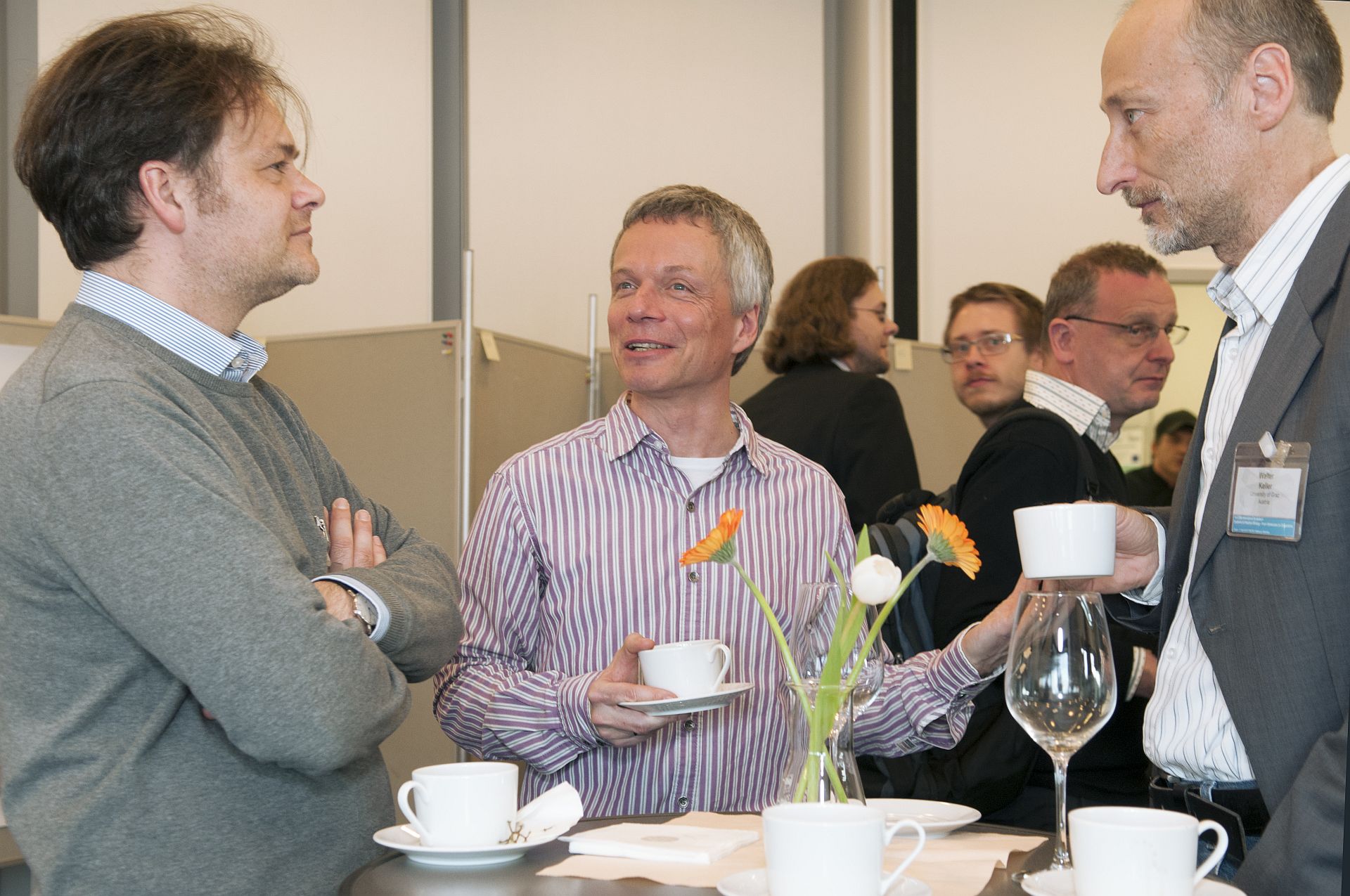
On Thursday evening, symposium participants took a tour of the synchrotron storage ring, Petra III, located on the DESY campus. Several group leaders from the European Molecular Biology Lab (EMBL) gave guided tours of the facility and explained the beamline technology and the services available for protein preparation and crystallization.
Opportunities for Young Scientists
On Friday evening, PhD and post-doctoral students displayed posters presenting their current research endeavours. Posters covered a variety of topics ranging from the structure of transfer proteins to the mechanisms of DNA transposons. Animated and in-depth discussions regarding the students’ posters lasted well into the evening.
At the conclusion of the symposium, three poster prizes were awarded by Jörg Maxton-Küchenmeister, Head of Program Area Science at the Joachim Herz Stiftung. The Joachim Herz Stiftung supports young scientist by providing them with opportunities to develop their interdisciplinary and networking skills. “CSSB’s international symposium gave young scientists the chance not only to learn about recent advances in systems biology research but also to share their own research with piers and international experts,” explains Maxton-Küchenmeister.
The poster prize recipients were Tobias Thöni (UKE, IMBA), Michael Heymann (DESY, CFEL) and Eike Schulz (EMBL).
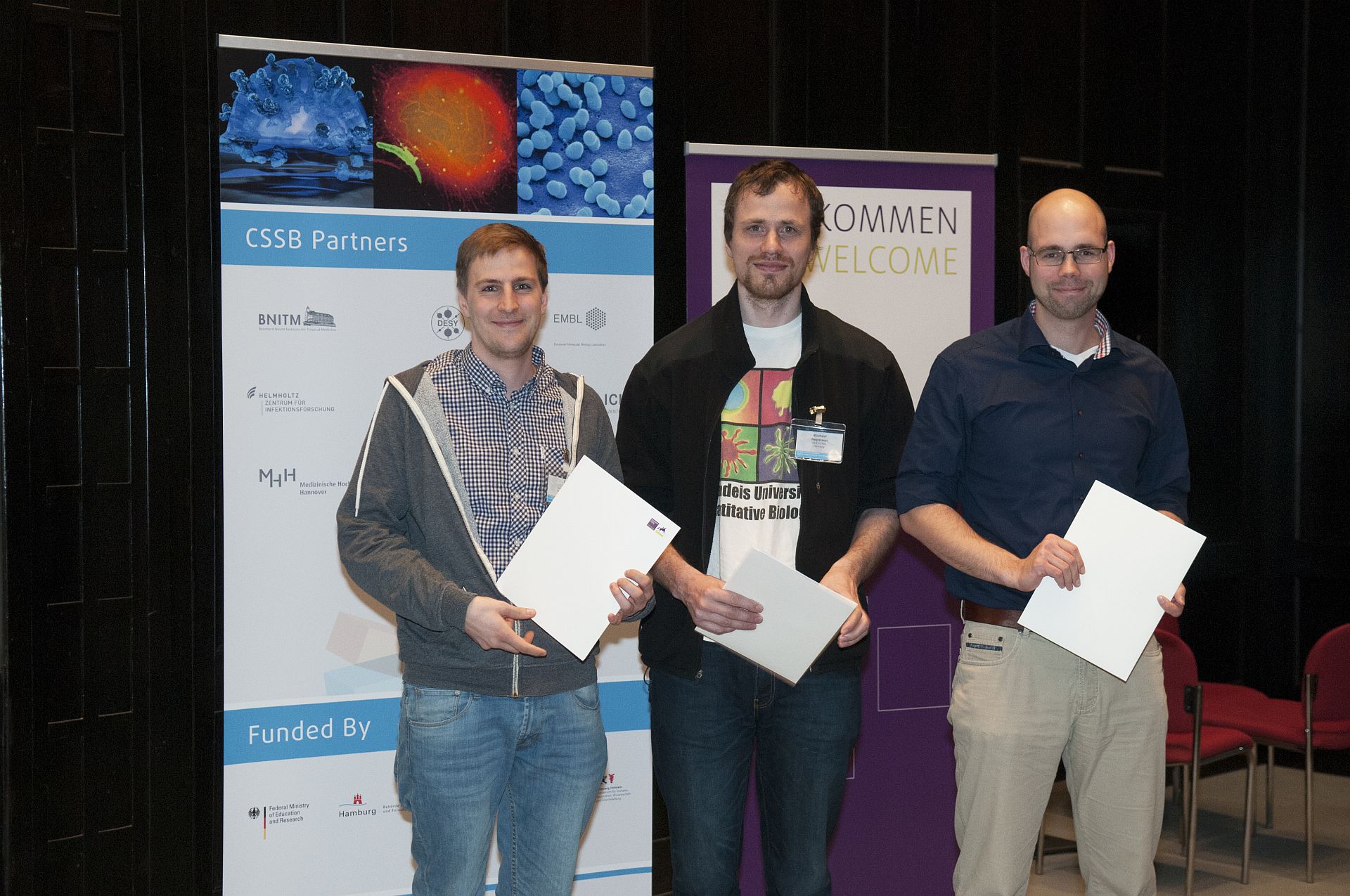
The Future of Systems Biology
The symposium drew to a close with a lively panel discussion regarding the future of systems biology. Moderated by Thomas Marlovits (CSSB, UKE), the discussion explored both the limits and potential of systems biology approaches in an entertaining and insightful manner. Panel members James Galagan (Boston University), Edda Klipp (HU Berlin), Wolf-Dietrich Hardt (ETH Zürich), and Joel Sussman (The Weizmann Institute of Science) discussed how they use systems approaches in their own research and gave their thoughts about the future of the field.
Wolf-Dietrich Hardt explained that “Systems biology will make a big difference because it is the first time there is a reasonable hope to use the modeling capacities to get as complete data sets as possible and assemble them into something that is consistent with reality, it’s an iterative process that brings us closer to reality.”
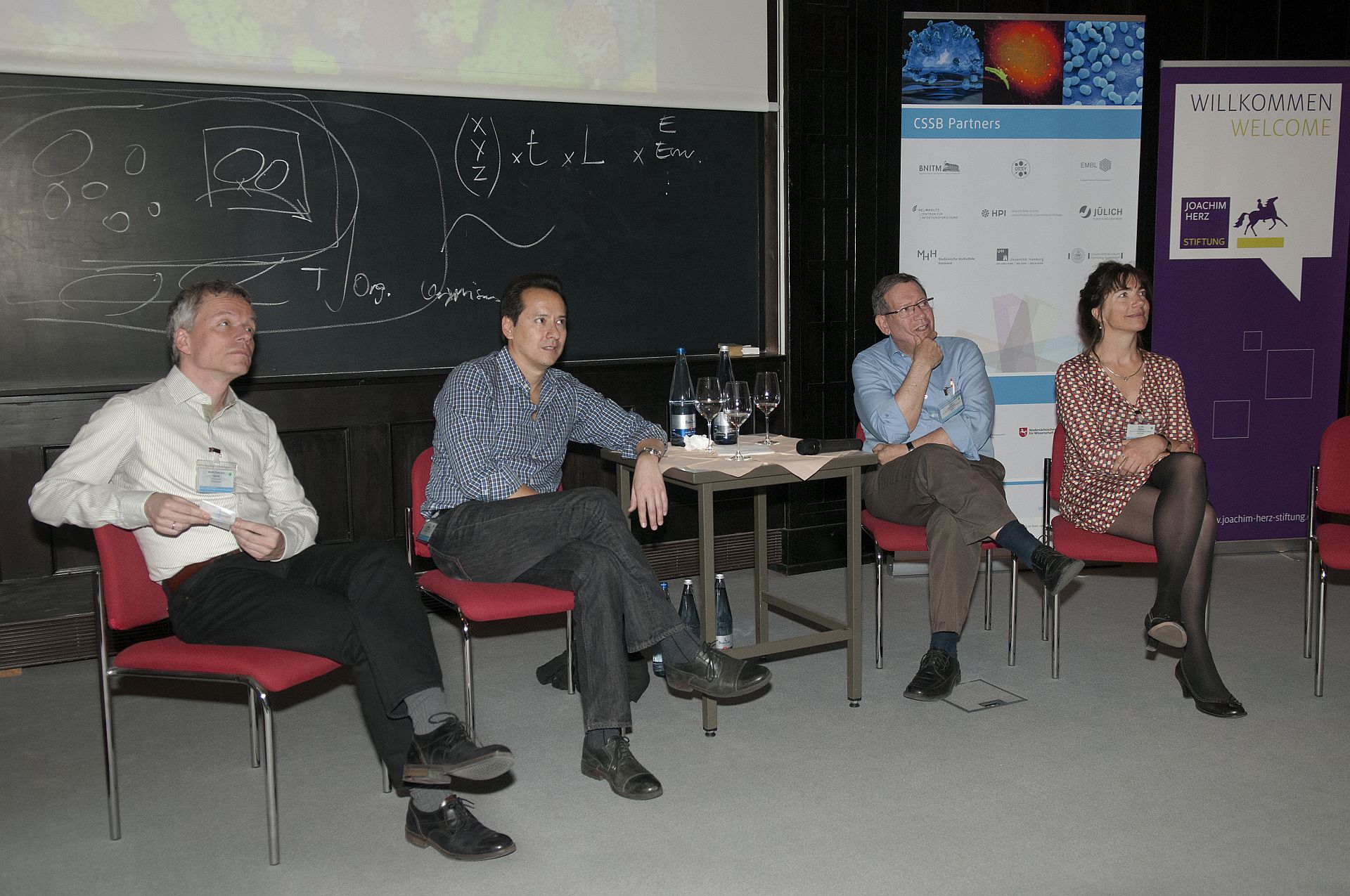
James Galagan stressed the importance of asking insightful questions when developing models and Edda Klipp emphasized the importance of open communication. “Communication is key - you must talk with others to establish which questions can be solved with model and find out where you need to get new data,” stated Klipp.
While discussing the goals of the CSSB, Patrick Aloy (IRB, Barcelona, Spain) remarked that “Whatever we achieve with structural systems biology, we need to be very clear what the added value of the structure is – let’s not try to solve the questions that could be answered without structure.” The panel discussion provided many thought provoking insights about systems biology and highlighted the enormous potential of combining the fields of systems, structural, and infection biology
“Overall, the 1st CSSB Symposium highlighted the importance of conducting interdisciplinary research and has paved the way for establishing an international community of researchers dedicated to linking the fields of systems, infection and structural biology,” explains Matthias Wilmanns. “We are truly looking forward to hosting our next symposium in 2017 in the lecture hall of the new CSSB building.”
